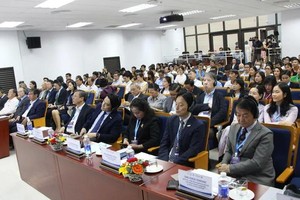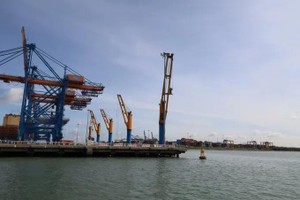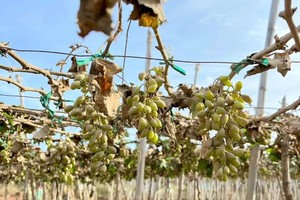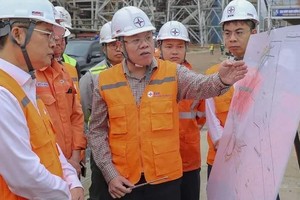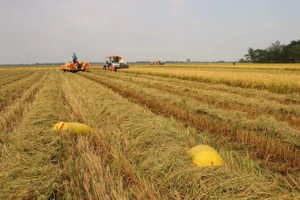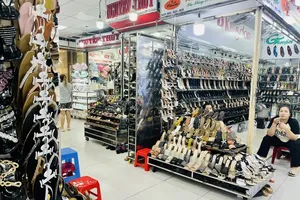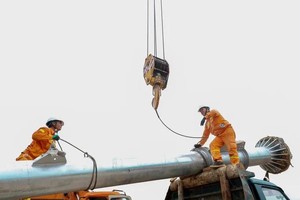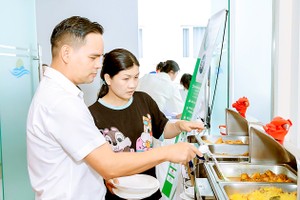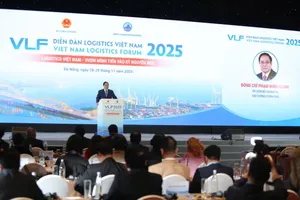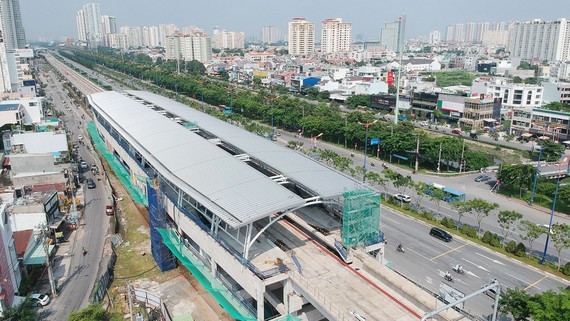
In the context that the country has struggled to fight against the Covid-19 pandemic from the beginning of the year to now, the above results are very positive. Contributing significantly to this success is the strategy to promote public investment as high as possible. Specifically, in the past 11 months, realized investment capital from the state budget reached VND406.8 trillion, equaling to 79.3 percent of the annual plan and increasing 34 percent over the same period last year.
The Government has been very drastic in directing and operating through several conferences and briefings on promoting the disbursement of public investment capital. The Government also sent many delegations to each province to directly resolve difficulties and problems in the process of implementing projects.
However, the immediate workload is not small when about VND200 trillion, one-third of the allocated public investment capital, has not been disbursed yet. This rate in official development assistance (ODA) is even lower as after ten months, just above VND18 trillion has been put into implementation, less than one-third of the total allocated capital.
Therefore, recently, the Ministry of Finance (MoF) continued to hold conferences with ministries, provinces, and foreign donors on the disbursement of public investment capital from the foreign loans of the Government in the first 11 months of this year.
At the conference, the MoF said that it would continue to review and work with provinces and projects with particularly-large account balances. For projects disbursing following output results, the ministry recommended provinces to work closely with management agencies of programs and projects to complete disbursement procedures as soon as the results are available.
As for capital advances that have been transferred to the project account at the State Treasury, the project owners need to urgently disburse, pay for the project activities, and send information back to the MoF.
For projects that do not use up their allocated capital, the MoF requested ministries and agencies to specify which projects to be cut. At the same time, in the coming time, they need to clarify which projects are completely undisbursable in 2020 and which ones can only partially disburse, and coordinate with the Ministry of Planning and Investment in determining the amount of capital that has been allocated in the period from 2016 to 2020 and the actual disbursed capital. If there is a shortage of capital and projects continue to be disbursed in the following years, they will have to be included in the medium-term plan for the period from 2021 to 2025 and the investment capital plan for next year.
Normally, the disbursement progress increases sharply during the last month of the year. However, the problem is not only to disburse all the capital planned for the year but also to ensure efficiency, avoid loss and waste of both resources and investment opportunities, thereby creating growth momentum for the year 2021.
The Government has been very drastic in directing and operating through several conferences and briefings on promoting the disbursement of public investment capital. The Government also sent many delegations to each province to directly resolve difficulties and problems in the process of implementing projects.
However, the immediate workload is not small when about VND200 trillion, one-third of the allocated public investment capital, has not been disbursed yet. This rate in official development assistance (ODA) is even lower as after ten months, just above VND18 trillion has been put into implementation, less than one-third of the total allocated capital.
Therefore, recently, the Ministry of Finance (MoF) continued to hold conferences with ministries, provinces, and foreign donors on the disbursement of public investment capital from the foreign loans of the Government in the first 11 months of this year.
At the conference, the MoF said that it would continue to review and work with provinces and projects with particularly-large account balances. For projects disbursing following output results, the ministry recommended provinces to work closely with management agencies of programs and projects to complete disbursement procedures as soon as the results are available.
As for capital advances that have been transferred to the project account at the State Treasury, the project owners need to urgently disburse, pay for the project activities, and send information back to the MoF.
For projects that do not use up their allocated capital, the MoF requested ministries and agencies to specify which projects to be cut. At the same time, in the coming time, they need to clarify which projects are completely undisbursable in 2020 and which ones can only partially disburse, and coordinate with the Ministry of Planning and Investment in determining the amount of capital that has been allocated in the period from 2016 to 2020 and the actual disbursed capital. If there is a shortage of capital and projects continue to be disbursed in the following years, they will have to be included in the medium-term plan for the period from 2021 to 2025 and the investment capital plan for next year.
Normally, the disbursement progress increases sharply during the last month of the year. However, the problem is not only to disburse all the capital planned for the year but also to ensure efficiency, avoid loss and waste of both resources and investment opportunities, thereby creating growth momentum for the year 2021.




